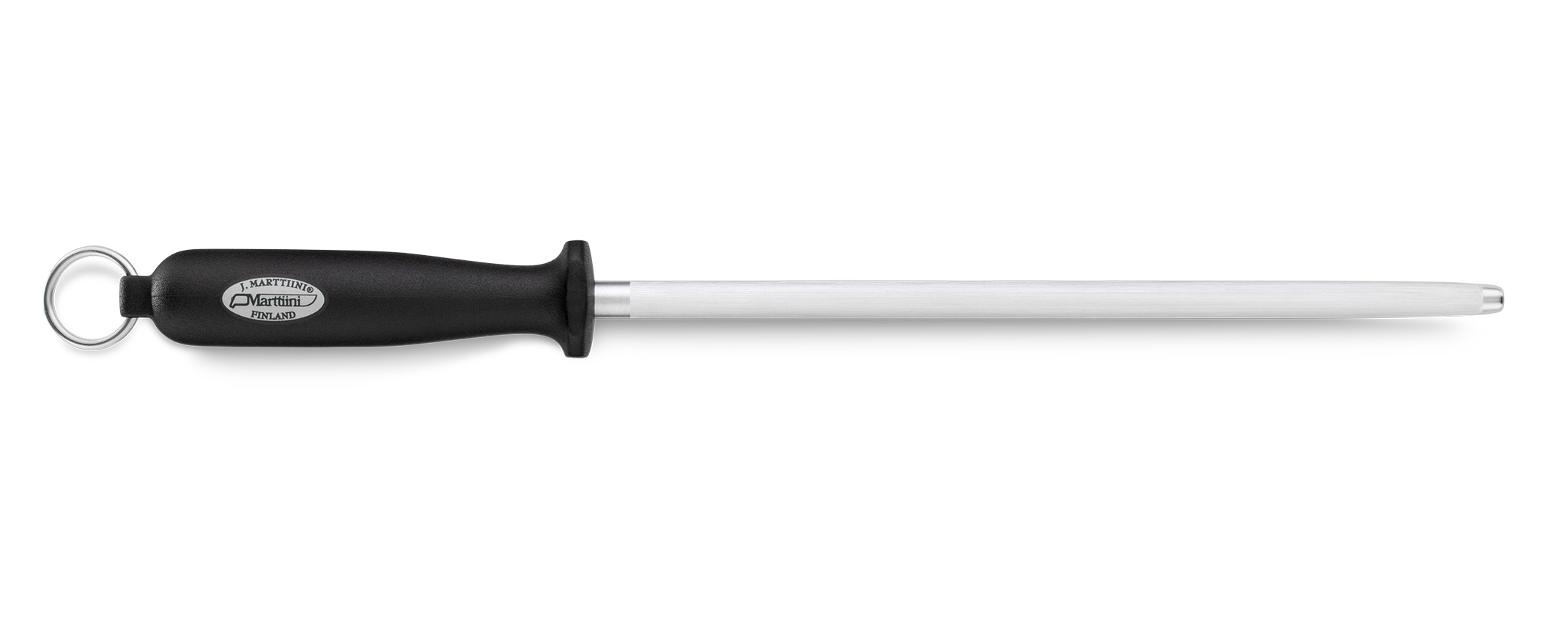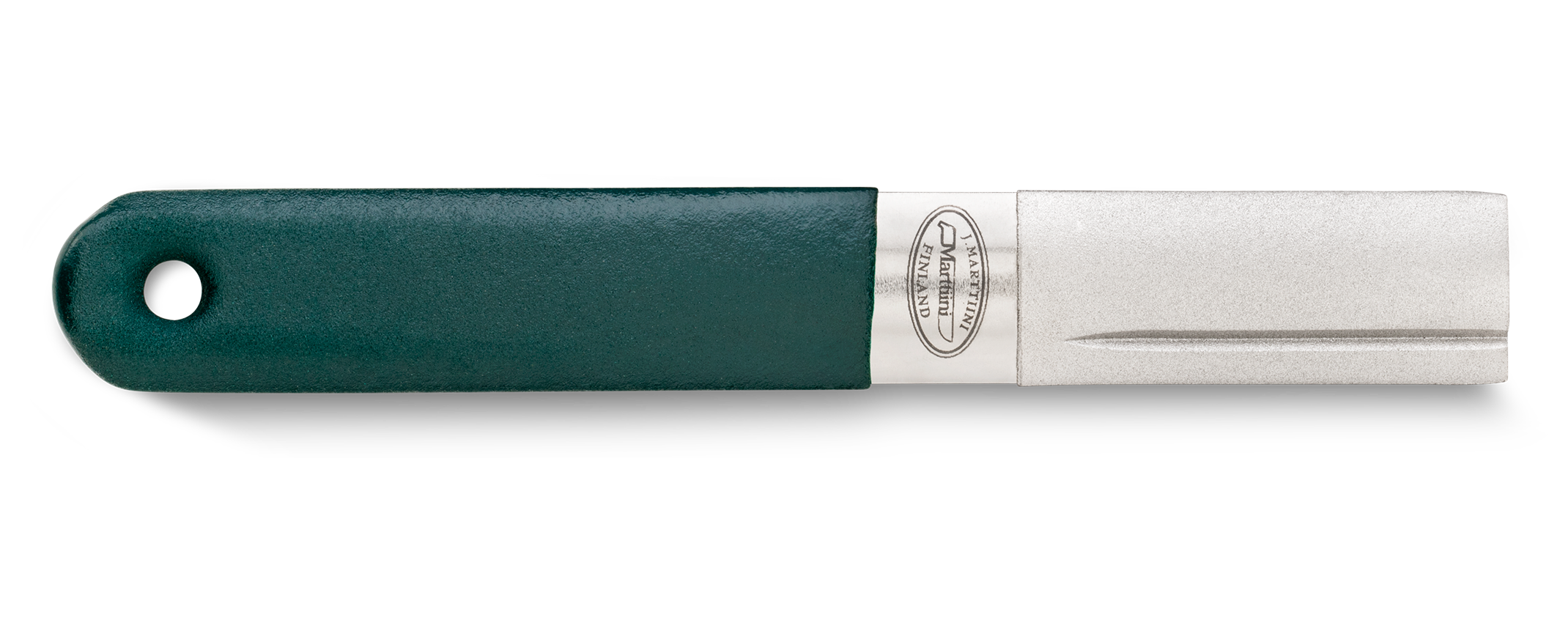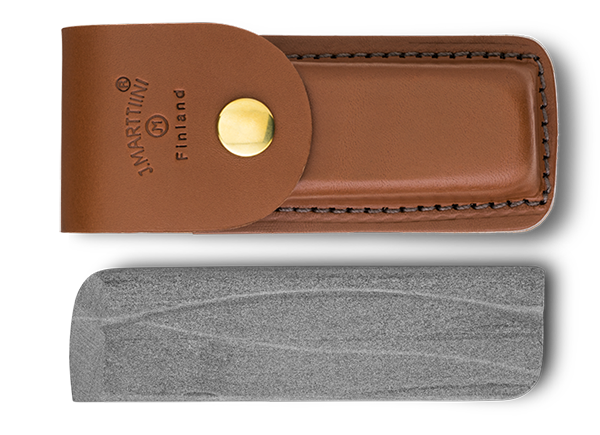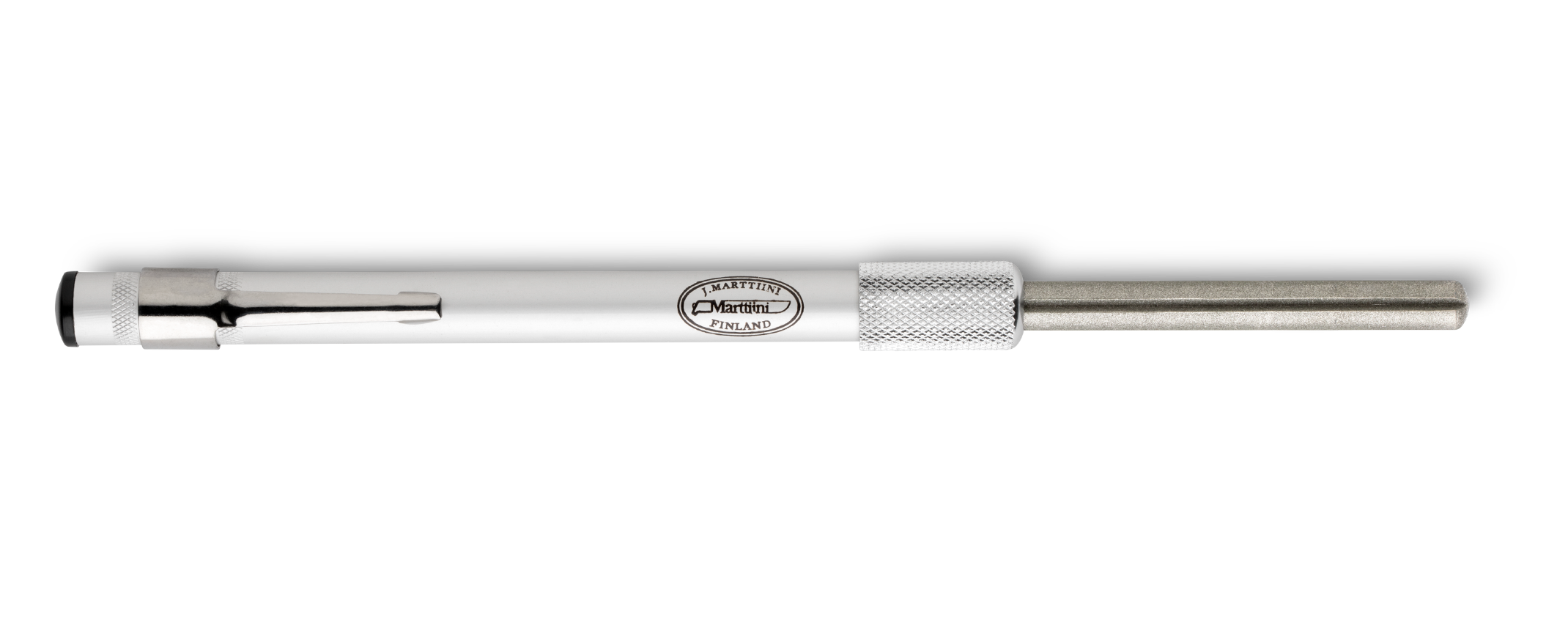Sharpen regularly
The single most important maintenance procedure of a knife is regular sharpening.
SHARPENING STONE
1. Moisten the stone with water.
2. Both sides of the blade are sharpened in a rotating motion along the blade angle.
Keep the knife sharpening angle according to the blade bevel. Lynx knives at a 0.5cm angle and Lapp knives at a 0.7cm angle. (22 degrees)
3. In the end the burr is neutralised with a few strong strokes on both sides with a slightly sharper angle than when sharpening (as if cutting thin shave from the stone).
When sharpening scissors remember to grind with parallel strokes and only to grind the cutting edge (do not touch the flat side).
You can sharpen a cheese slicer with the sharp end of the stone. With the narrow end of the stone you can reach other awkward places. Y ou can use the stone as a nail file or to sharpen hooks, various chisels, scythes, and sicldes.
DIAMOND SHARPENING STEEL AND SHARPENING STEEL
A diamond sharpener steel is an excellent tool for sharpening kitchen knives and filleting knives.
We recommend using this steel to sharpen stainless chrome steel blades. The diamond particles included in the tool make the sharpening of knifes simple and easy.
Using a sharpener steel keeps kitchen knives and filleting knives always sharp. It is advisable to use this tool daily, in order to ensure that blades do not get excessively blunt and round.
Keep the steel vertical, and slide the knife down along the steel’s surface with its blade turned upward, treating both sides of the blade.
Measure the distance between the head end and the steel. With the correct distance you can be sure that the angle is correct. (22 degrees)
- Marttiini kitchen knives about 1 cm
- Marttiini small size kitchen knives about 0.5 cm
- Marttiini Filleting knives about 0.5 cm
Slide the blade of the knife lightly along the sharpening steel, keeping the blade at the correct angle along its entire length. Repeat on the other side of the blade. Perform these movements a total of 3 to 5 times.
Repeat the same on the other side.
As an aid, if you have not previously sharpened, to find the right sharpening angle, stain the point to be sharpened with a marker pen. You will see immediately where the diamond catches the blade.

1515111 DIAMOND SHARPENING STEEL

DIAMOND SHARPENER PEN, FLAT AND OVAL
With diamond coated sharpeners you can sharpen even the hardest of blades, such as stainless chrome steel blades.
Marttiini small diamond sharpening pen is specially designed to be carried on your person.
Diamond Sharpener Pen is a perfect tool for keeping kitchen knives and filleting knives sharp, but it can also be used to sharpen ice augers, skinning knives and gutting hooks. The flat part of the sharpener can be used to give ‘first-aid’ treatment to blade edges. The sharpener also features a sharpening groove for hooks.
Diamond Sharpener Flat is particularly suited for sharpening sheath knives. The sharpener features two surfaces with different grit grades: first, the blade is sharpened on the rough side, by making circular movements, and then the blade edge is finished on the finer side to remove any circular marks. The sharpener also has a groove for sharpening hooks.
Diamond Sharpener Oval rounded shape is extremely well suited for sharpening curved-bladed tools, such as skinning knives, augers, scythes and sickles. However, it is also an excellent instrument for sharpening filleting knives and kitchen knives.
Wash and dry the sharpener after each use. This sharpener is generally used in the same way as a sharpening stone. The main rule is to keep the sharpener stationary and move the knife along its surface. However, this does not apply to curved and large items, such as sickles, axes and scythes.

1515113 DIAMOND SHARPENER FLAT

1515114 DIAMOND SHARPENER OVAL
BLADE SHARPENING ANGLE AND DEGREES
The blade has sharpening angles, which are marked in the degrees. Marttiini's basic knife and filet knife have a sharpening angle of 22 degrees when both blade halves are counted in total.
When sharpening, it is important to strive to keep this degree. Few, however, have a degree meter at home, so it is easier to measure the distance between the blades backside and the sharpened side.



